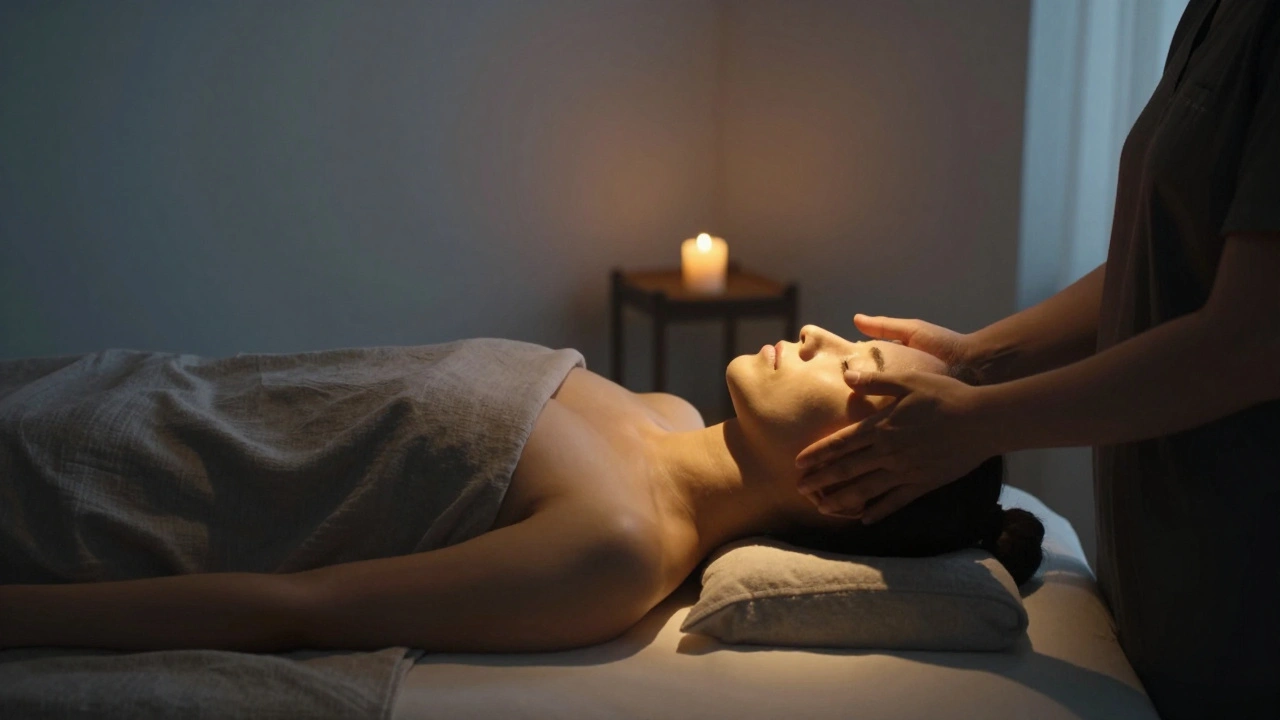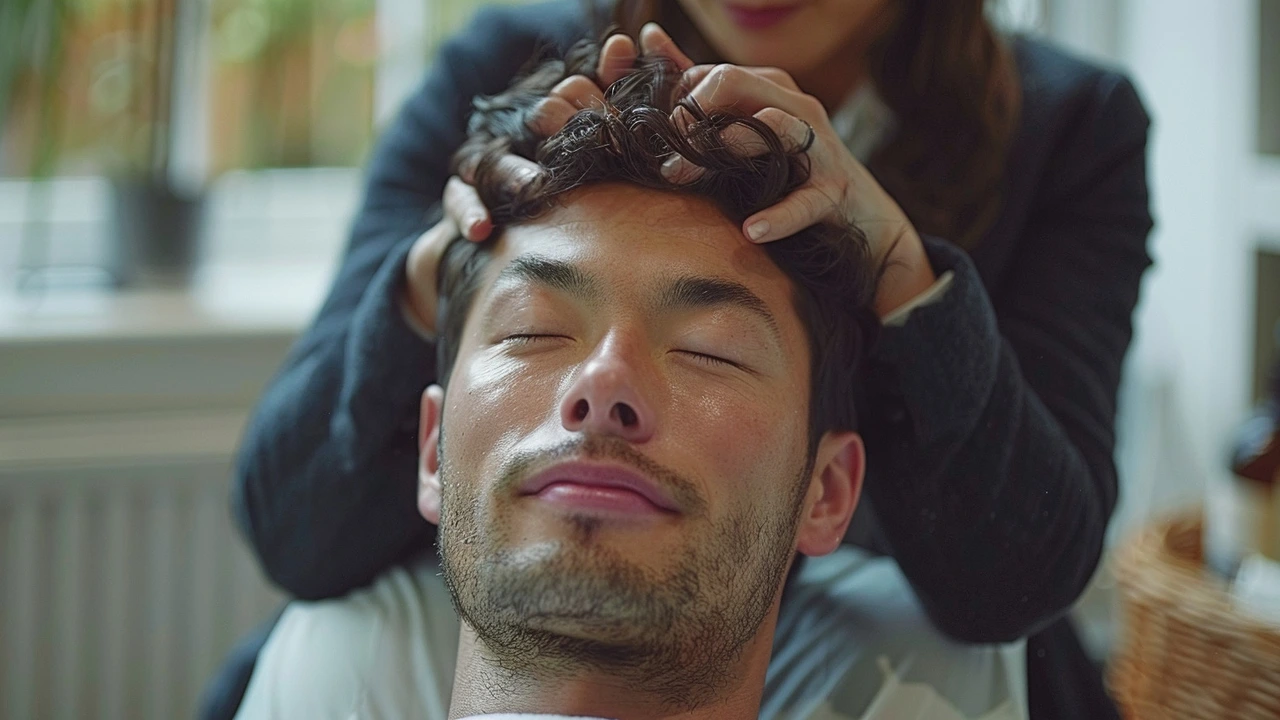Anxiety reduction: practical massage moves and quick fixes you can use today
Feeling tense or wired? Massage and somatic therapies can calm your nervous system fast. This page gives clear, usable tips you can try at home or bring to your next session—no jargon, no fluff. Read the short routines and exact things to ask your therapist so you leave feeling lighter.
Hands-on methods to try now
Start with breath: inhale slowly for 4 counts, hold 1–2 counts, exhale for 6–8 counts. Do five rounds while sitting upright—your body responds fast when breathing is steady. Next, use acupressure: press the point between thumb and index finger (LI4) for 30–60 seconds to ease tension, and press two fingers above the inner wrist (PC6) for calm and steadying nerves. For a head-calm, rub the soft spot between your eyebrows (Yintang) with light circular pressure for a minute.
Self-massage is simple and effective. Use your thumbs to work along the base of your skull and down the neck for 30–60 seconds per side. For tight shoulders, press and hold trigger points—slowly increase pressure until you feel a release; hold for 30–45 seconds and breathe into it. Warm stones or a hot towel applied to the upper back for five minutes relax muscles and help the breath slow down—great on anxious evenings.
Which therapies work best and how to pick one
Different methods suit different people. If you want hands-on, calming touch, try Amma or Lomi Lomi—both use rhythmic strokes that ease tension and nervous-system arousal. If you prefer gentle movement and awareness, Feldenkrais or Hellerwork can reduce the body’s holding patterns that feed anxiety. Polarity therapy and Ortho-Bionomy focus on gentle shifts and energy balance; they’re low-force and good if deep pressure spikes your stress.
When you book, ask the therapist how they handle anxiety: how long sessions last, whether they use breath guidance, and if they offer softer pressure options. Aim for weekly sessions at first if anxiety is high, then taper to every 2–4 weeks as you feel better. Short home routines (5–10 minutes of breath plus one acupressure site) between visits keeps gains steady.
Safety notes: don’t push into sharp pain, avoid deep pressure on inflamed areas, and check with a provider if you’re pregnant or have a recent injury. Communicate clearly with your therapist—say what feels good, where you hold stress, and if you want silence, music, or guided breathing during the session.
Finally, combine therapies with simple daily habits: regular movement, a short breathing break during work, and one focused self-massage before bed. Small, consistent steps add up—massage helps reset your nervous system, but you keep the calm by practicing short routines every day.

Reiki and Its Role in Mental Health: What Science and Experience Show
Reiki offers gentle, non-invasive support for anxiety, stress, and emotional overwhelm. Learn how this energy-based practice helps reset the nervous system and complements traditional mental health care.

Enhancing Mental Health Through Acupressure Techniques
Discover the power of acupressure for boosting mental health in this comprehensive guide. Acupressure, an ancient healing technique rooted in traditional Chinese medicine, offers a drug-free approach to improving various mental health issues, including stress and anxiety. This article explores the most effective acupressure points for mental wellness, backed by scientific insights and practical tips for incorporating these techniques into daily life. Learn about the benefits and methodologies to harness the therapeutic potential of acupressure for a healthier mind.
Categories
- Health and Wellness (148)
- Alternative Therapies (86)
- Massage Therapy (40)
- Travel and Culture (15)
- Beauty and Skincare (9)
- Holistic Health (8)
- Health and Fitness (5)
- Spirituality (5)
- Other (2)
- Personal Development (2)
Popular Articles



